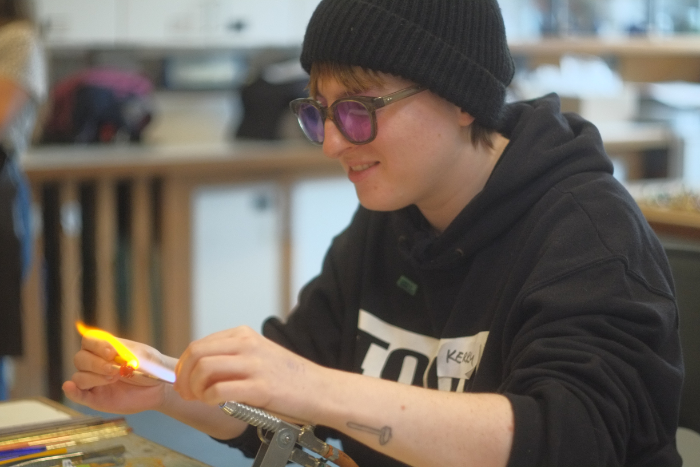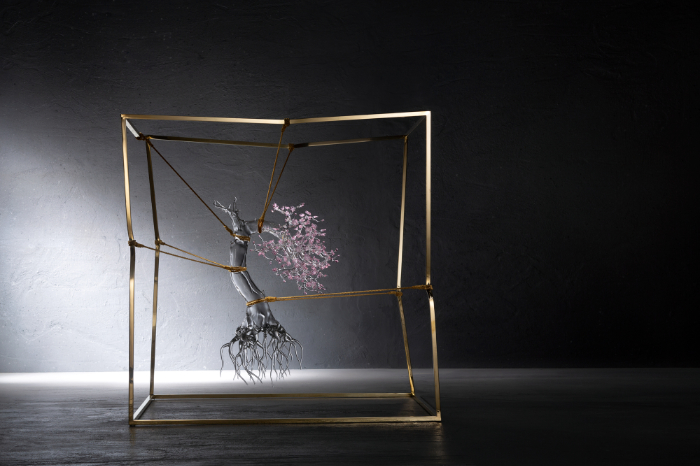
Simone Crestani: Capturing the clash between man and nature
Italian flameworker Simone Crestani melds tradition and innovation to create contemporary glassworks that juxtapose fragile, yet hard, contours with elegant design. Linda Banks finds out more from this talented glass artisan.
What led you to start working with glass?
I started to work for a glass factory back in 2000 when I was 15. It was supposed to be just a summer job. However, I immediately knew that it was my ‘cup of tea’ and decided to stay. So that’s it… a summer that has lasted for 21 years!
What glass techniques have you used in your career and why do you have a preference for flame worked glass today?
I have dedicated all my career to flameworking, working with borosilicate glass exclusively. I believe it’s important to focus on a single technique to get great technical results.
Can you tell us something about how you developed your glass working methods? Do you draw your designs out or dive straight in with the materials?
I usually do a lot of research before starting a new work/collection, but then I go straight to the material. Somehow, that works easier than drawing for me. Also, this approach leaves space for improvisation, which is something I really enjoy.
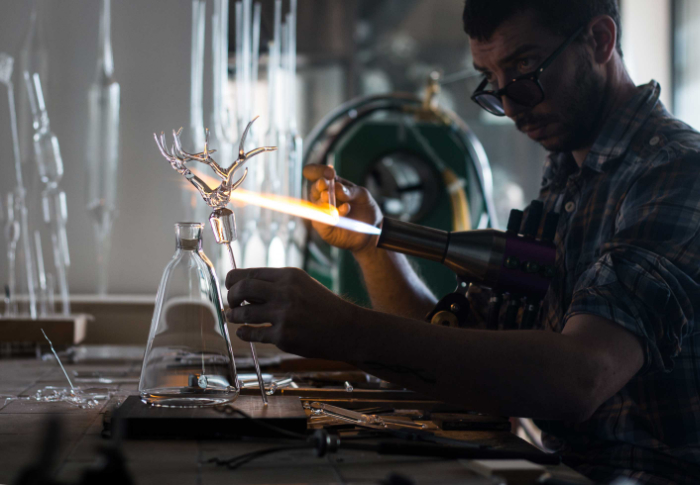
What is your favourite tool or piece of equipment and why?
This is an interesting question for me because it makes me think how much my way of working has changed over the years.
I learned to work glass in a factory where we used only a few tools to make everything. For years I worked with just an old torch, a pair of tweezers and some pieces of graphite.
But, as my work has become more refined, I have added new items of equipment. Now I have many tools that I cannot live without, which I was not using before.
What message do you want to covey to your audience through your glass work? What is the thinking behind your trophy pieces, for example?
All my sculptural works aim to investigate the relationship between humans and nature. I am fascinated by moments in which nature and man connect, meet and merge. Sometimes our impact on it is sustainable, but most of the time is not. That’s what I want to say – I want to teach people to respect our beautiful world.
Your bonsai pieces are magical. What led you to make this series?
My father is an amateur bonsai grower, and I grew up surrounded by all his little trees. When I first started to make them in glass, I probably didn’t realise how closely they related to my own philosophy.
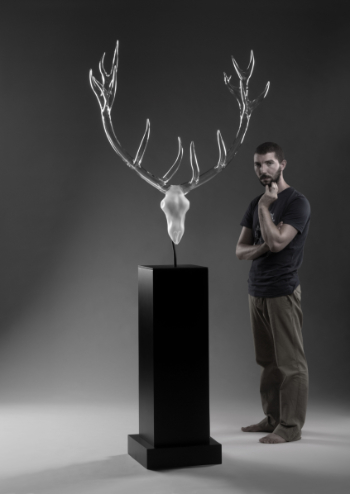
I admire the power of nature. Man uses a great deal of energy to control, conquer and bend it, but nature always finds a way of having the last word. In this continuous search for equilibrium, opposing forces fight; strength against fragility, impetuousness against steadfastness, planning against spontaneity. I don’t care who wins the fight; my goal is to immortalise the clash, the exchange, the fight.
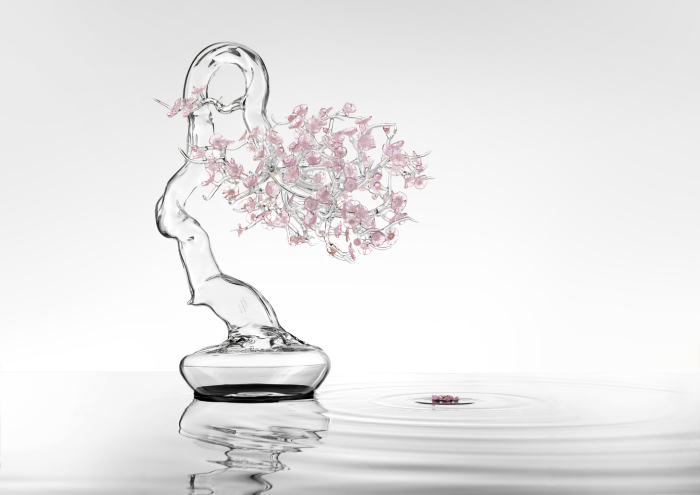
Can you tell us about your collaborations with other designers? What are the benefits of working with them?
I have collaborated with other designers a few times in the past, but I cannot say that I enjoy the experience. However, I find it very interesting to collaborate with other artists or craftsmen that use different materials to mine. Somehow that makes me think outside the box and sometimes it results in some nice ideas.
Do you have a favourite piece you have made? Why is it your favourite?
I don’t think I have a favourite one, but I still love some of my earliest pieces, because they have some spontaneous imperfections that I would ‘t be able to replicate today.
Where do you show and sell your work?
I sell and show my work all over the world, but mostly in the US. Recently, my work has moved more and more online.
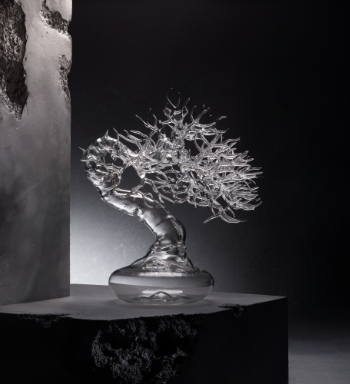
Do you have a career highlight?
Last year I was awarded the title of ‘Master of arts and craft’ from Fodazione Cologni, which is the Italian institution for crafts. That meant a lot to me.
Who or what inspires you?
Nature, of course. I spend a lot of my time outdoors and I love to observe the life around me and translate it into glass.
How has the coronavirus impacted your practice?
I would say that it has changed my practice in a positive way. It slowed down my way of working and improved my online market. Both of these are changes that I want to maintain in the future.
About the artist
Simone Crestani, born in 1984 near Venice, is an Italian glass artist and designer, based in Vicenza (Veneto). He started to work glass at Massimo’s Lunardon factory when he was 15 and opened his own studio, Atelier Crestani, in 2010. Here, he developed his own ways of working borosilicate glass with the torch, which he terms the Hollow Sculpture technique.
In the last 10 years he has exhibited at many prestigious places around the world. He is also an instructor and visiting artist at some of the most important international glass centres.
Find out more about Simone Crestani and his work via his website.
Main feature image: ‘Aesthetic Tension’ (2019).

